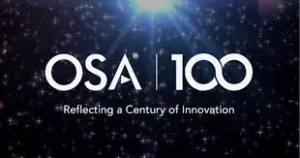Researchers at the University of Ottawa observed that twisted light in a vacuum travels slower than the universal physical constant established as the speed of light by Einstein’s theory of relativity. Twisted light, which turns around its axis of travel much like a corkscrew, holds great potential for storing information for quantum computing and communications applications.
In The Optical Society’s journal for high impact research Optica, the researchers report that twisted light pulses in a vacuum travel up to 0.1 percent slower than the speed of light, which is 299,792,458 meters per second. Although light does slow down when traveling through clear dense materials such glass or water, this is the first time that scientists have shown that twisting light can slow it down.
“Anyone who wants to use twisted light for quantum communication should be aware of this effect,” said Ebrahim Karimi, assistant professor at the University of Ottawa and leader of the research team. “If they don’t compensate for the slow-light effect, information coded on twisted light might not arrive in the right order. Propagation speeds can significantly affect many protocols related to quantum communication.”
Benefits of twisted light
Most people are familiar with the solid spot found in laser pointers created by Gaussian laser beams. In contrast, the corkscrew shape of twisted light creates a donut shape when shone on a surface. The light can carry an infinite number of twists over one wavelength.
Karimi and Frederic Bouchard, a graduate student in Karimi’s lab and the paper’s first author, are studying twisted light because of its great potential for quantum communication and quantum computers. Today, light is used to encode information by either varying the number of photons emitted or switching between light’s two polarization states. Twisted light offers the advantage that each twist can encode a different value or letter, allowing the encoding of a great deal more information using less light. Twisted light might one day offer a quantum-based communication method that uses less energy and is more secure than today’s methods.
The researchers first noticed the slow speed of twisted light when conducting experiments with Gaussian laser light and light with 10 twists. “We realized that the two beams didn’t arrive at the detector at the same time,” Karimi said. “The twisted light was slower, which was surprising until we realized that the twists make the beam tilt slightly as it propagates. This tilt means that the twisted light beam doesn’t take the straightest, and thus fastest, path between two points.”
Measuring the delay
Once the scientists understood that the time delay came from the twisted nature of the light, they set about the challenging task of measuring the delay, which they calculated to be on the order of tenths of a femtosecond (one quadrillionth of a second). After a year of searching for a capable measurement method, they connected with nonlinear optics scientists who suggested they modify an approach known as frequency-resolved optical gating (FROG) that is used to measure ultrashort laser pulses.
Using the modified FROG approach, Karimi’s research team worked with Robert Boyd’s team, also at the University of Ottawa, to compare Gaussian beams with different types of twisted light. They found that increasing the number of twists further slowed the light. They measured delays as long as 23 femtoseconds for the twisted light beams.
“The type of precision that can be measured using FROG was not previously used in the quantum optics community, and thus scientists in this area were not aware that twisted light traveled slower than the speed of light,” Karimi said.
If it’s possible to slow the speed of light by altering its structure, it may also be possible to speed up light. The researchers are now planning to use FROG to measure other types of structured light that their calculations have predicted may travel around 1 femtosecond faster than the speed of light in a vacuum.

